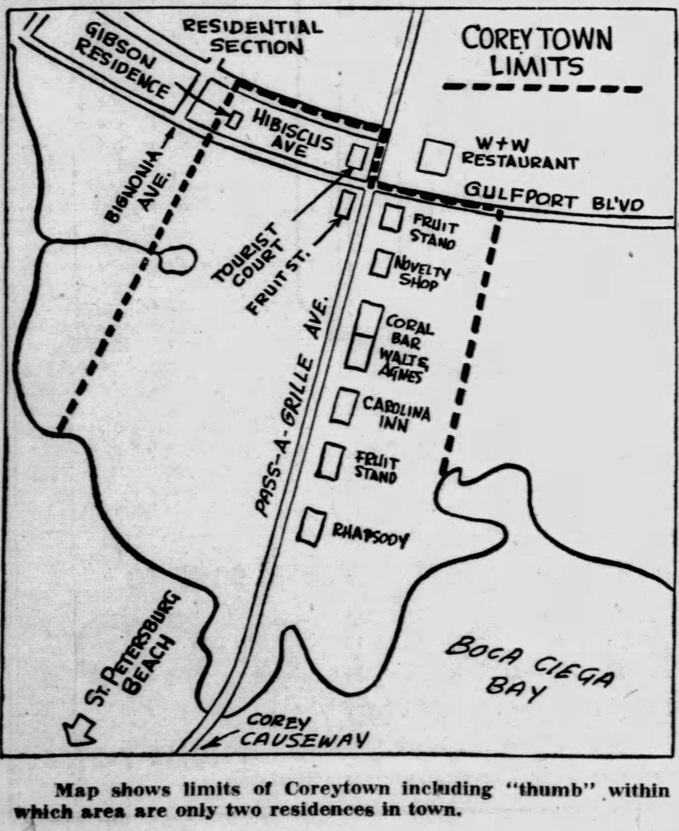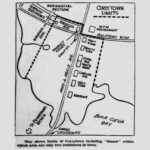
Coreytown: The City Fueled by Booze
Coreytown was a short-lived municipality in Pinellas County, Florida, existing from 1948 to 1951 in an area that is now part of South Pasadena. Established on March 23, 1948, Coreytown was created primarily to circumvent county liquor regulations, allowing for more liberal alcohol consumption and nightlife.
The town's boundaries encompassed a narrow peninsula south of Gulfport Boulevard, which had been dredged in the mid-1920s to connect to the original Corey Causeway. The town's establishment coincided with a period of rapid development in St. Petersburg and its surrounding communities, as Florida became a popular destination for tourists and new residents.
At its inception, Coreytown had a minimal population, with fewer than 15 residents, most of whom were associated with local bars and businesses. The town's establishment exploited an antiquated Florida law that permitted incorporation if 25 freeholders (landowners) resided within its boundaries. Notably, the first mayor, Walter Caldwell Henry, was a proprietor of the Rhapsody Bar, highlighting the town's ties to the alcohol industry.
The creation of Coreytown had a significant impact on neighboring communities. For instance, bar operators in the nearby town of St. Petersburg Beach reported declining revenues as patrons flocked to Coreytown for its more relaxed drinking laws. While Coreytown's focus on nightlife made it controversial, it also highlighted the tension between traditional values and the increasing commercialization of leisure activities during the mid-20th century.
However, Coreytown's existence was fraught with controversy. In November 1950, eight landowners filed a lawsuit challenging the town's legitimacy, arguing that it was established solely to bypass county liquor regulations. This legal challenge, combined with other factors, led to the town's dissolution in 1951. Subsequently, the area underwent further development and was incorporated into the city of South Pasadena in July 1955.
Today, little remains of Coreytown's original establishments. Notable exceptions include Ten Pin Lanes, a bowling alley that opened in 1950 and continues to operate in South Pasadena. The transformation from Coreytown's vibrant nightlife to South Pasadena's more subdued residential character reflects the area's dynamic history and evolving community values.
Coreytown's brief existence remains a fascinating chapter in Pinellas County's history, emblematic of Florida's post-war cultural shifts and the entrepreneurial spirit of the era. Its founding was not only a response to strict liquor laws but also reflected the growing demand for nightlife and leisure activities in the burgeoning Gulf Coast region.
Though the town itself lasted only a few years, its legacy endures in the stories of those who lived through its vibrant, albeit short-lived, existence. Today, Coreytown serves as a reminder of how local politics, culture, and economics intersected in shaping the development of modern-day Pinellas County.



